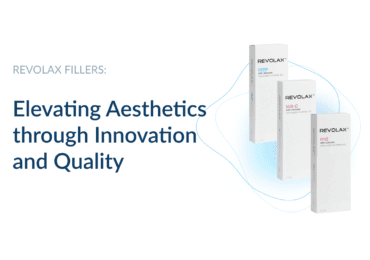In the realm of aesthetic medicine, two of the most frequently utilized non-surgical procedures are dermal fillers and Botox injections. Despite their widespread popularity and overlapping applications, these treatments are fundamentally different in their composition, mechanisms of action, and ideal use cases. For aesthetic medicine professionals, understanding these differences is crucial for effective patient consultations and achieving optimal results.
Composition and Mechanisms of Action
Dermal Fillers
Dermal fillers are injectable substances used primarily to restore lost volume, enhance contours, and improve skin hydration. The most common types include hyaluronic acid (HA) fillers, calcium hydroxylapatite (CaHA), poly-L-lactic acid (PLLA), and polymethyl methacrylate (PMMA).
- Hyaluronic Acid Fillers: HA is a naturally occurring substance in the skin that retains moisture. When injected, HA fillers attract water, providing volume and smoothing wrinkles and folds.
- Calcium Hydroxylapatite: CaHA is a mineral-like compound found in bones. It provides a scaffold for collagen production, offering immediate volume and long-term results.
- Poly-L-Lactic Acid: PLLA stimulates collagen production, improving skin texture and firmness over time. It is particularly effective for facial volume loss.
- Polymethyl Methacrylate: PMMA consists of tiny beads suspended in collagen. It provides a more permanent solution by forming a scaffold for the body’s own collagen to grow around.
Botox
Botox, or Botulinum Toxin Type A, is a neurotoxin that temporarily paralyzes muscles by blocking the release of acetylcholine at the neuromuscular junction. This action smooths dynamic wrinkles, which are formed by repetitive muscle movements, such as frown lines, crow’s feet, and forehead lines.
Ideal Use Cases
Dermal Fillers
- Volume Restoration: Fillers are ideal for restoring lost volume in areas such as the cheeks, temples, lips, and hands.
- Contour Enhancement: They can enhance facial contours, including the chin, jawline, and nose.
- Wrinkle and Fold Correction: Fillers effectively smooth nasolabial folds, marionette lines, and perioral lines.
- Skin Hydration: HA fillers can also improve overall skin hydration and elasticity.
Botox
- Dynamic Wrinkles: Botox is best suited for treating dynamic wrinkles caused by muscle movement, such as glabellar lines (frown lines), lateral canthal lines (crow’s feet), and horizontal forehead lines.
- Facial Slimming: By reducing the activity of the masseter muscles, Botox can create a slimmer facial appearance.
- Hyperhidrosis: Botox is also used to treat excessive sweating (hyperhidrosis) by inhibiting sweat gland activity.
Treatment Longevity
- Dermal Fillers: The longevity of fillers varies depending on the type and location of injection. HA fillers typically last 6 to 18 months, CaHA lasts up to a year, PLLA requires multiple sessions but results can last over 2 years, and PMMA offers permanent results.
- Botox: The effects of Botox generally last 3 to 6 months, requiring regular maintenance sessions to sustain results.
Safety and Side Effects
Both treatments are considered safe when administered by experienced professionals. However, understanding their side effects and contraindications is essential for patient safety.
Dermal Fillers
- Common Side Effects: Bruising, swelling, and redness at the injection site.
- Rare Complications: Vascular occlusion, leading to tissue necrosis, and potential allergic reactions.
Botox
- Common Side Effects: Mild pain, swelling, or bruising at the injection site, and temporary muscle weakness.
- Rare Complications: Ptosis (drooping eyelid), asymmetry, and unintended muscle paralysis.
Conclusion
While dermal fillers and Botox serve distinct purposes within aesthetic medicine, they can also complement each other to achieve comprehensive facial rejuvenation. For practitioners, a thorough understanding of their differences, applications, and potential risks is essential for delivering personalized and effective treatments. By leveraging the unique properties of each, specialists can help patients achieve their desired aesthetic outcomes with precision and safety.



